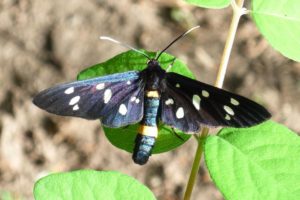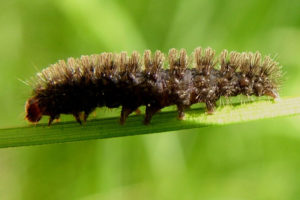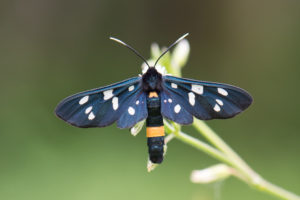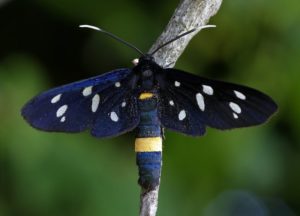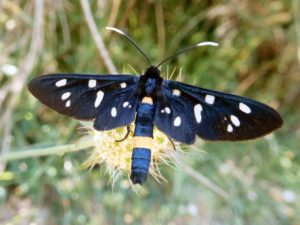Nine Spotted Moth (Amata phegea)
The nine spotted moth is an Erebidae moth, first described by famed Swedish zoologist Carl Linnaeus in the 10th edition of Systema Naturae.
live.staticflickr.com
Scientific Classification
- Family: Erebidae
- Genus: Amata
- Scientific Name: Amata phegea
Description and Identification
Adult Moth
Sexual Dimorphism: Present. Males have thicker antennae and are generally smaller.
Color and Appearance
Their bodies are long, with a yellow spot on the 2nd segment and a yellow ring on the 6th segment of the abdomen.
Forewings: When the wings are open, theyare blueish black or greenish-black with six white spots and a metallic sheen. When the wings are closed, the colors and patterns remain visible.
Hindwings: When the wings are open, they are similar to the forewings in colors, with fewer spots. When the wings are closed, they become hidden.
Average wingspan: 35–40 mm
Flight pattern: Consistent
Season: Late May to August
Egg
Eggs are generally laid on a variety of herbs.
Quick Facts
| Other Names | Yellow belted burnet |
| Distribution | Southern Europe, but sometimes spotted in north Germany |
| Habitat | Dry areas andopen forests containing shrubs and trees |
| Predators | Birds |
| Lifespan of Adults | 1 week |
| Host Plants | Herbaceous plants like bedstraws, dandelions, docks, fleaworts, and grasses |
| Adult Diet | Not recorded |
Scientific Classification
- Family: Erebidae
- Genus: Amata
- Scientific Name: Amata phegea

